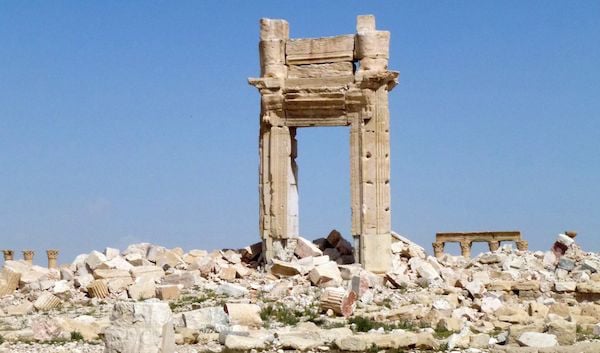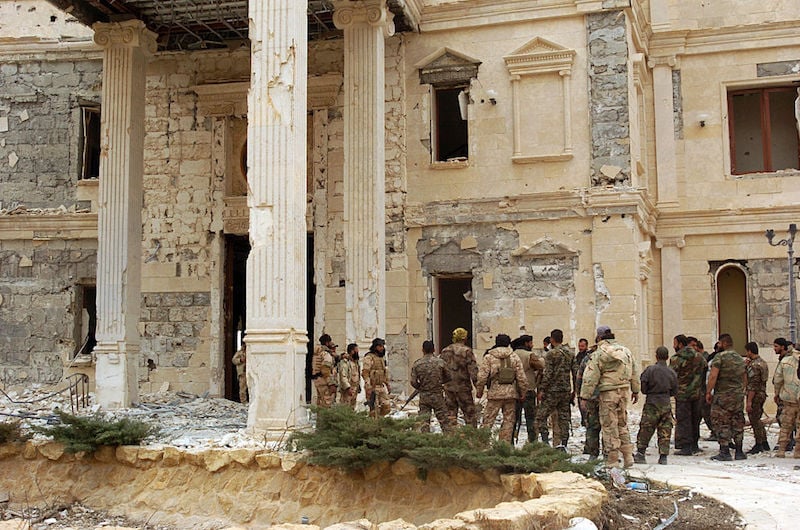Law & Politics
UN Expert Warns That Palmyra May Never Be Restored to Its Former Glory
Is the destruction caused by ISIS permanent? Experts differ.

Photo: Maher Al Mounes/ Stringer/ Getty.
Is the destruction caused by ISIS permanent? Experts differ.

Amah-Rose Abrams

Following the liberation of Palmyra from ISIS by the Syrian and Russian armed forces last week, experts have weighed in stating that any restoration of the site would be limited and that the ancient site will never be restored to its former glory.
Annie Sartre-Fauriat, UN expert and member of the Syrian heritage group set up by UNESCO in 2013, has stated that, despite optimistic reports last week that there will be a rebuild plan before the end of April, the full restoration of the city, even with international aid, would be unlikely.
“Everyone is excited because Palmyra has been ‘liberated’, but we should not forget everything that has been destroyed,” Sartre-Fauriat told AFP. “When I hear that we are going to reconstruct the Temple of Bel, that seems illusory. We are not going to rebuild something that has been reduced to dust. Rebuild what? A new temple? I think there are probably other priorities in Syria before rebuilding ruins.”

Syrian government troops assemble on the outskirts of Palmyra.
Photo: STR/AFP/Getty Images.
Sartre-Fauriat’s calls for realism come after years during which the international community has powerlessly watched the destruction by ISIS of ancient sites in Syria and Iraq. She also sought to remind the international community that the Syrian authorities have also looted and destroyed parts of Palmyra prior to ISIS taking the ancient city.
“As long as the Syrian army is there, I am not reassured,” Sartre-Fauriat explained to AFP. “We should not forget that the army occupied the site between 2012 and 2015 and caused a lot of destruction and pillaging.
Syria’s head of antiquities Maamoun Abdulkarim has a different, more positive view, though, stating that the restoration would take five years and that 80 percent of the city was in decent shape.
“We will not leave the temples destroyed […]. We will assess how much damage the stones suffered and we will re-use them in order to scientifically put back the temples,” Abdulkarim told the Guardian.
Sartre-Fauriat also highlighted that what wasn’t destroyed in many cases was taken from the city and sold, as ISIS uses the black market in antiquities to fund its activities, adding that the damage done to the city was more widespread than originally thought.
“[…] Contrary to what we thought, the [Palmyra Museum] was not emptied of its collection (prior to the arrival of ISIS) because the antiquities department had only 48 hours to pack everything up and the large monuments could not be transported,” the UN expert revealed.